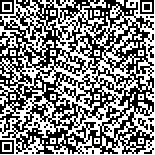|
|
| |
|
|
| 本文已被:浏览 828次 下载 784次 |

码上扫一扫! |
|
|
| 獐子岛海域和胶州湾表层微微型浮游植物丰度和生物量的季节变化比较 |
|
李苏恒1,2,3, 董逸1,2,4, 赵苑1,2,4, 孙晓霞1,2,4,5, 张光涛2,4,5, 赵丽1,2,4, 张武昌1,2,4, 肖天1,2,4
|
|
1.中国科学院海洋研究所 中国科学院海洋生态与环境科学重点实验室 山东青岛 266071;2.青岛海洋科学与技术试点国家实验室 海洋生态与环境科学功能实验室 山东青岛 266237;3.中国科学院大学 北京 100049;4.中国科学院海洋大科学研究中心 山东青岛 266071;5.中国科学院海洋研究所 山东胶州湾海洋生态系统国家野外科学观测研究站 山东青岛 266071
|
|
| 摘要: |
| 为全面了解黄海典型海区微微型浮游植物的季节变化特征,于2009年7月至2010年6月在北黄海獐子岛海域和2010年1~12月在南黄海胶州湾进行逐月调查采样,利用流式细胞仪检测了表层海水中微微型浮游植物(picophytoplankton)的丰度,包括聚球藻(Synechococcus,SYN)和微微型真核浮游植物(picoeukaryotes,PEUK),并分析了其与环境因子的关系。獐子岛海域和胶州湾SYN和PEUK全年广泛分布,獐子岛海域SYN丰度范围在0.05×103~120.00×103cells/mL之间,丰度在秋季最高;胶州湾SYN丰度范围在0.02×103~61.80×103cells/mL之间,丰度在夏季最高。獐子岛海域PEUK丰度范围在0.01×103~18.76×103cells/mL之间,丰度在秋季最高;胶州湾PEUK丰度范围在0.25×103~95.57×103 cells/mL之间,丰度在春季最高。獐子岛海域微微型浮游植物丰度组成以SYN为主;而胶州湾以PEUK为主。PEUK是两海区微微型浮游植物生物量的主要贡献者。相关性分析结果表明,温度是影响两海区SYN丰度季节变化的最主要因素;影响PEUK季节分布的因素不完全一致,獐子岛海域PEUK丰度主要受温度调控;胶州湾PEUK丰度主要受温度和营养盐浓度影响。与已有研究比较,这两个海区的微微型浮游植物生物量对浮游植物生物量的贡献明显高于其他温带沿岸海域,预示微微型浮游植物在獐子岛海域和胶州湾生态系统中的重要作用,值得进一步深入研究。 |
| 关键词: 聚球藻 微微型真核浮游植物 季节比较 海区间比较 獐子岛海域 胶州湾 |
| DOI:10.11693/hyhz20220300058 |
| 分类号: |
| 基金项目:中国科学院海洋大科学研究中心重点部署项目,COMS2020Q09号;国家自然科学基金,42076139号;中国科学院对外合作重点项目,133137KYSB20200002号。 |
|
| COMPARISON IN SEASONAL VARIATION OF SURFACE PICOPHYTOPLANKTON ABUNDANCE AND BIOMASS IN THE ZHANGZI ISLAND AREA AND THE JIAOZHOU BAY |
|
LI Su-Heng1,2,3, DONG Yi1,2,4, ZHAO Yuan1,2,4, SUN Xiao-Xia1,2,4,5, ZHANG Guang-Tao2,4,5, ZHAO Li1,2,4, ZHANG Wu-Chang1,2,4, XIAO Tian1,2,4
|
|
1.CAS Key Laboratory of Marine Ecology and Environmental Sciences, Institute of Oceanology, Chinese Academy of Sciences, Qingdao 266071, China;2.Laboratory for Marine Ecology and Environmental Science, Pilot National Laboratory for Marine Science and Technology(Qingdao), Qingdao 266237, China;3.University of Chinese Academy of Sciences, Beijing 100049, China;4.Center for Ocean Mega-Science, Chinese Academy of Sciences, Qingdao 266071, China;5.Jiaozhou Bay Marine Ecosystem Research Station, Institute of Oceanology, Chinese Academy of Sciences, Qingdao 266071, China
|
| Abstract: |
| To understand the seasonal variation of picophytoplankton in the Yellow Sea, monthly investigations were conducted in the Zhangzi Island area from July 2009 to June 2010 and in the Jiaozhou Bay from January to December 2010. Synechococcus and picoeukaryotes were discriminated in flow cytometry, whereas Prochlorococcus was not detected in this study. In the Zhangzi Island area, the abundance of Synechococcus ranged from 0.05×103 to 120×103cells/mL, and maximum abundance occurred in autumn. The abundances of picoeukaryotes ranged from 0.01×103to 18.76×103cells/mL, and the maximum abundance occurred in autumn. In the Jiaozhou Bay, the abundance of Synechococcus ranged from 0.02×103 to 61.8×103cells/mL and picoeukaryotes ranged from 0.25×103 to 95.57×103cells/mL, with maximum abundances in summer and spring, respectively. Around the Zhangzi Island area, picophytoplankton was dominated by mainly Synechococcus abundance, whereas in the Jiaozhou Bay, it was dominated by picoeukaryotes abundances. Picoeukaryotes were the major contributors to picophytoplankton biomass compared to Synechococcus in both areas. Statistical analysis showed that Synechococcus was mainly affected by temperature in the two areas. Around the Zhangzi Island area, picoeukaryotes were mainly regulated by temperature, while in the Jiaozhou Bay, picoeukaryotes were mainly affected by temperature and nutrients. In this study, the contribution of picophytoplankton to phytoplankton biomass was significantly higher than those in other temperate coastal areas, indicating the importance of picophytoplankton in the Zhangzi Island area and the Jiaozhou Bay. |
| Key words: Synechococcus Picoeukaryotes seasonal comparison regional comparison Zhangzi Island Area Jiaozhou Bay |
|
|
|
|
|
|
